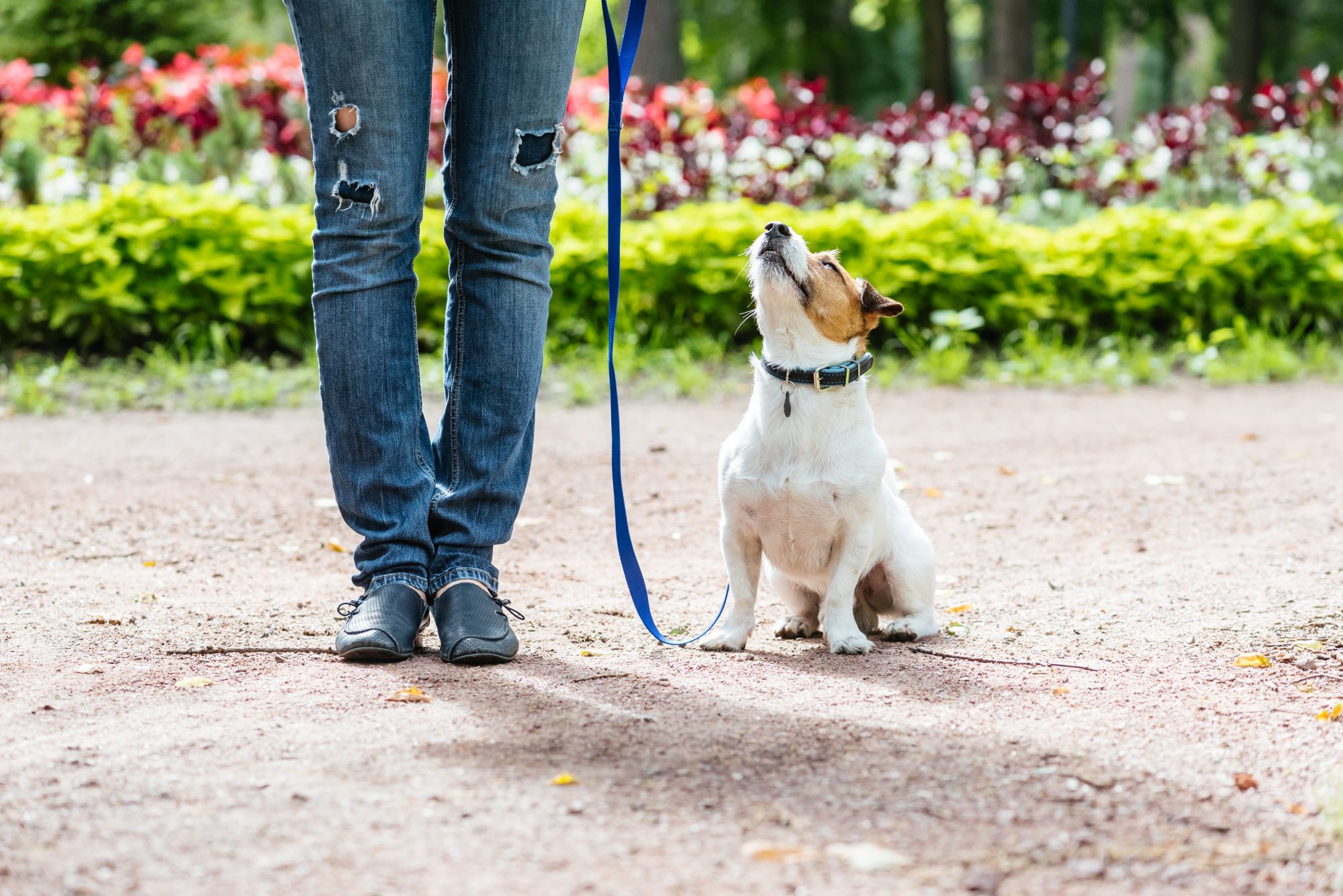National Dog Bite Prevention Week®

by MANDI BROADBENT, CSR
ANY DOG CAN BITE.
Just because a dog looks small and harmless, doesn’t mean it is. Even the most sweet and loving of animals can bite or snap if provoked. What’s more scary – some owners actually promote aggression in their dogs or allow aggression to go unchecked. This often leaves well-intentioned folks injured or worse.
Do you know how to prevent a dog bite?
The second full week in April is National Dog Bite Prevention Week®. Hosted every year by the American Veterinary Medical Association (AVMA), this week aims to bring awareness to these common, and often preventable, occurrences. Each April, veterinary hospitals and organizations across America shift their focus to assisting pet owners on education and training to help prevent dog bites. They also offer resources on how owners can educate themselves, their children, and others about proper dog bite prevention.
Did you know that as many as 4.5 million people each year report they have been bitten by a dog?
From nips to bites to serious attacks, dog bites are a serious problem. There are more than 89 million canines living in households across the United States. With 1 out of every 5 dog bite injuries requiring medical attention – that’s nearly 1 million bites every year. More than half of those bitten are under 12 years of age, too. Most dog bites occur during everyday activities and while interacting with familiar dogs and kids. Children – especially young children – and senior citizens are the most common victims, and are far more likely to be severely injured!
Certain dog breeds have an unfair reputation for being more aggressive than others and more likely to bite, however there is very little scientific evidence to support these claims. The only difference is that larger dogs tend to produce bites that require medical attention more often than smaller dogs.
Information and education are the best tools for dog bite prevention. Remember, it is more important for us to focus on things that we know decrease the chance of a bite occurring:
- Proper training and socialization of your pet.
- Educating yourself about how and when to approach a dog.
- Educating your children about how and when to approach a dog.
- Know the limitations of your pet, and know the warning signs to watch out for.
Carefully Select Your Pet
Don’t just get a puppy on an impulse. Taking responsibility for the life of an animal is a serious business and should be treated as such. Before and after selection, your veterinarian is your best source for information on behavior, health, and suitability.
Socialize Your Pet
Work with them to ensure they feel at ease around other people and pets. Gradually expose your pup to a variety of situations under controlled circumstances. Then, continue that exposure on a regular basis as your dog gets older. Remember, just because your dog isn’t a puppy anymore doesn’t mean that they don’t need play groups or time at the dog park. Interactions like these help keep a dog social and friendly. Don’t put your pet in a position where he or she can feel threatened or teased.
Take Extra Care With Young Children
ALWAYS supervise the interactions of young children and dogs, including your own dogs. Also, carefully manage the introduction of a child or a new dog to your household. Consider delaying acquiring a new dog until your children are over the age of four.
Train Your Dog
The basic commands like “sit”, “stay”, “no”, and “come” can be incorporated into fun activities that build a bond of obedience and trust between pets and people. Try and avoid highly excitable games like wrestling or tug-o-war with strangers. Also, your pet should always be on a short leash in public. This ensures that you always have a hand on the situation. It is best to avoid using a retractable leash as they frequently release and allow far too much distance between your and your dog to guarantee safe pet control. This is a big reason why retractable leashes are now banned from use here at Lincolnshire Animal Hospital.

Keep Your Dog Healthy
Keeping your pet current on their annual exams and vaccinations against rabies and other preventable diseases is paramount. Parasite control and overall health care are vitally important since how well your pet feels directly affects how they behave. Think about it, if we’re painful or uncomfortable, we tend to get a bit grouchy; it’s the same with our pets. Dogs in pain are more likely to lash out. Making sure painful conditions such as arthritis, or injuries, are addressed by your veterinarian as soon as possible will help keep your pet feeling well.
Be A Responsible Pet Owner
Obey leash laws. If you’ve got a fenced yard, make sure the gate is closed or locked at all times. Try to walk and exercise your dog regularly to provide mental stimulation, as well as to maintain a healthy lifestyle. Studies of dog bite events suggest that it is beneficial to spay or neuter your dog – discuss this with your veterinarian.
Be Alert
Know your dog and recognize when your pet is stressed, uncomfortable, or showing signs of aggression. As a responsible pet owner, be prepared to intervene and prevent an escalation of the situation. Try to remove your dog from situations that could increase the risk of biting. If your dog shows signs of fear or aggression that seem unprovoked or potentially dangerous, consult your veterinarian to help determine the cause and possible treatments
If you’re asking, “How can my family and I avoid being bitten?”, there are a couple things to remember:
- Be cautious around strange dogs.
- Treat your own pet with respect.
- Never leave a baby or small child alone with a dog.
- Be alert for potentially dangerous situations. Then, take measures to prevent or stop them from escalating.
- Teach children, including toddlers, to be careful around, and respectful of, dogs. Teach them not to approach strange dogs or try to pet dogs through fences.
- Always ask permission to pet a stranger’s dog, and make sure your child asks as well. Not all dogs are friendly enough for a stranger or a child, and asking if you can pet them first can help to prevent a potentially harmful situation.
If you would like to learn more about training for your pet, or have questions schedule an appointment with your veterinarian. You can also call our office at (847) 634-9250 to speak with a receptionist today!

